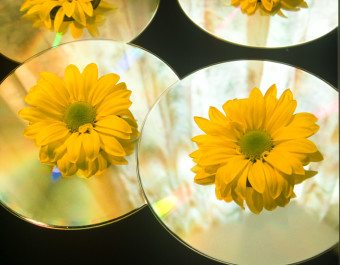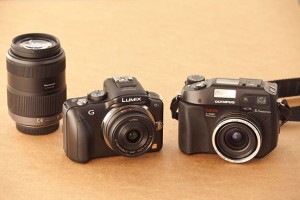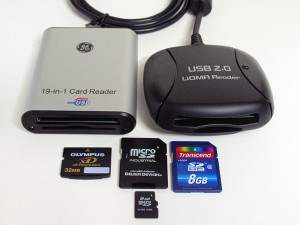 What is the difference between DVD-R and DVD+R ?
What is the difference between DVD-R and DVD+R ?
The DVD-R standard (pronounced: DVD dash R) pre-dates DVD+R (pronounced: DVD plus R). Today, most DVD players can read both. A DVD burner may be specific to one or the other. Use discs that are compatible with your burner.
DVD+R has a few technical advantages; notably, DVD+R supports both single layer discs and dual layer discs.
DVD-R discs are typically the least expensive.
What about DVD-RW, DVD+RW, and DVD-RAM ?
Rewritable discs (RW) can be erased and re-written. These discs contain a phase-change metal alloy. R formats utilize an organic dye (non metalic); once it has been written, it cannot be erased.
RW discs typically take more time to write/burn. DVD-RW or DVD+RW discs are commonly rated either 2x or 4x speed, while DVD-R discs are commonly 16x.
DVD-RAM discs are relatively uncommon or obsolete. DVD-RAM is typically not compatible with the DVD player attached to your television.
What is 2x, 4x, 8x, etc. ?
This indicates the speed at which the disc can be written.
Time to write an entire single-layer disc
2x = 30 min
4× = 15 min
8× = 8 min
16× = 5.75 min
What is dual layer ?
Dual layer discs have an embedded second layer, so have twice the storage capacity of single-layer. Some DVD burners can write both single-layer discs and dual-layer discs. A standard DVD player attached to your television likely does support dual-layer, unless it is a particularly old machine. Many Hollywood movie DVDs are actually on dual-layer discs.
Which should I use for compatibility with most DVD players ?
Most DVD players can read any R or RW disc. The following list begins with the highest compatibility.
(1) DVD-R should be compatible with 95% of all DVD players.
(2) DVD+R should be compatible with 85% of all DVD players.
(3) DVD+RW
(4) DVD-RW
Once again, DVD-R is typically the least expensive.
What about Blu-Ray ?
While Blu-Ray discs are the same physical size (as DVDs), Blu-Ray is higher density (more storage capacity), and capable of much higher data rates. For HD 720p or HD 1080 video, you need Blu-Ray.
DVD players cannot play Blu-Ray discs. Many Blu-Ray disc players can play both Blu-Ray and DVDs, but this is not universally true.
Which disc should I use to save computer files ?
For use on a single computer, you can use any disc that it can write. For sharing with other computers, single-sided single layer discs are the most compatible.
4.7GB – single sided, single layer DVD
9.4GB – double sided, single layer DVD
8.5GB – single sided, dual layer DVD
17.1GB – double sided, dual layer DVD
25GB – single layer Blu-Ray disc (BD)
50GB – dual layer Blu-Ray disc (BD)
I want a custom image on the top of the disc; How do I do that ?
There are three methods.
Inkjet printable disc label
Adhesive disc labels are generally frowned upon. Adding a label can cause problems for some DVD players. If you do apply a label, always use a donut-style round label and be very careful to insure the label is centered on the disc. An off-center label can cause a disc to wobble at high speed.
Inkjet printable disc
Most printable discs are plain white on the top surface. Some inkjet printers include the ability to print on discs. Alternatively, specialized disc printers are capable of printing many copies very quickly.
If the blank printable area extends almost to the center of the disc, this is referred to as “hub printable”. On a regular printable disk (not hub printable), the printable area stops about 3/4-inch from the center hole.
LightScribe disc
A LightScribe disc includes a reactive dye (in the top surface) that allows imprinting using a LiteScribe-capable DVD burner. In my experience, the print always fades, even to the point of disappearing.
Lightscribe has apparently been discontinued; both discs and burners are increasingly difficult to find.
When saving video for a disc, what video bitrate should I use ?
The ability of a DVD player to sustain playback at a given bitrate is highly variable from across different models.
You can choose variable bitrate (VBR) or constant bitrate (CBR). If you use VBR, then the average bitrate should be comparable to CBR. Here are very vague guidelines.
Standard definition 480p : 10 MB/minute
High definition 720p : 20 MB/minute
High definition 1080p : 35 MB/minute

